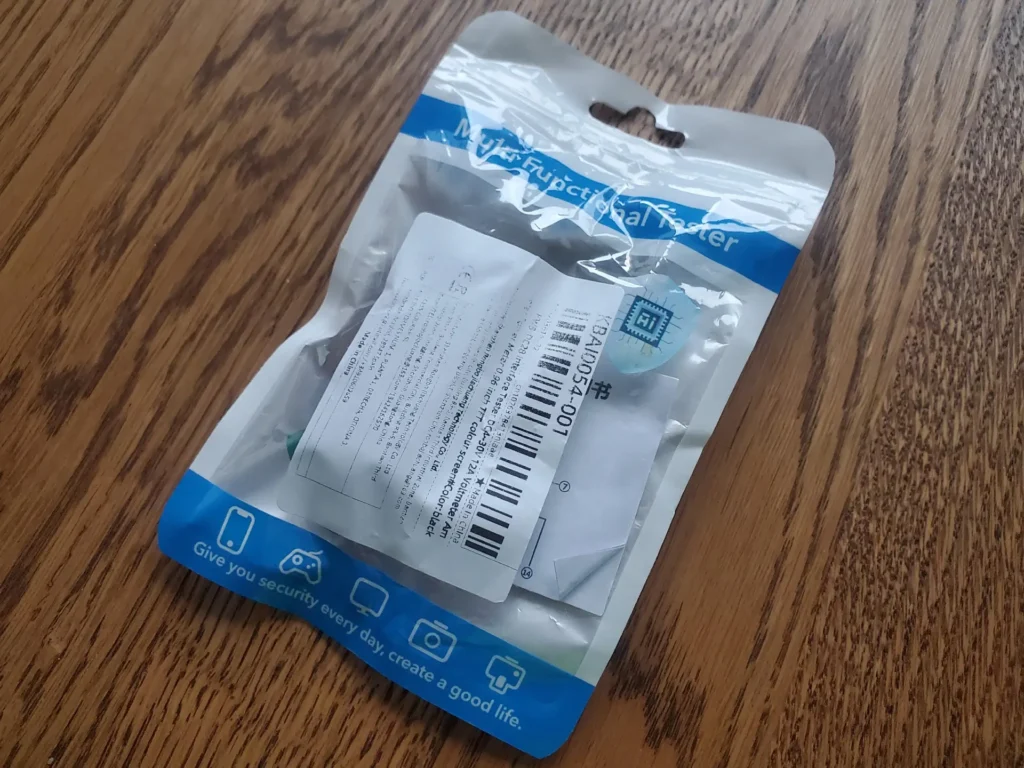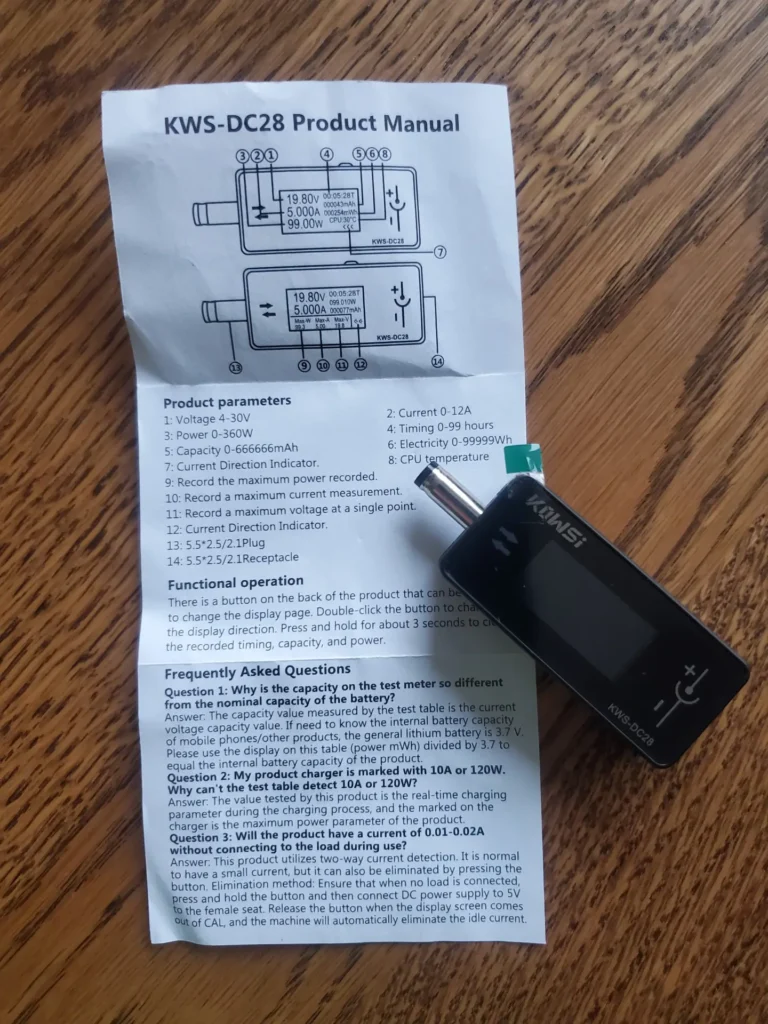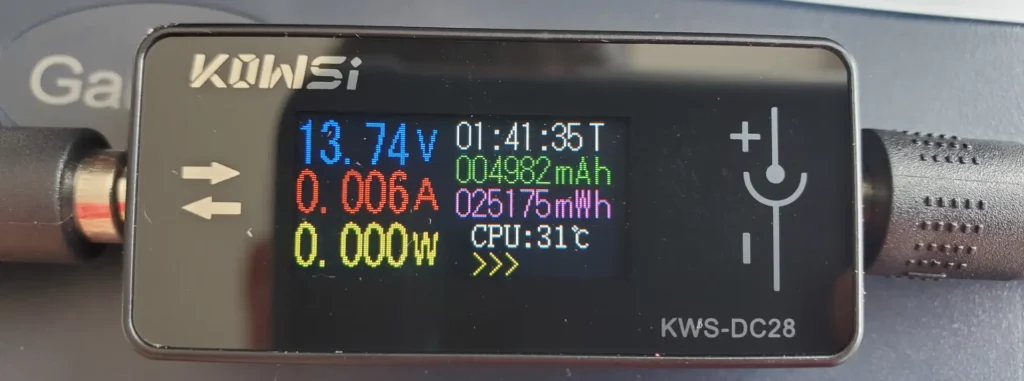In the world of electronics and power systems, new tools are constantly emerging to simplify the measurement of voltage, current, and power. One of them is the Kowsi KWS-DC28 — a tester designed for accurate monitoring of charger, power supply, and battery parameters.
In this article, I’ll review this tester and perform several measurements of current and voltage using a battery and a power supply unit.
Description
I purchased this tester for about $5 at a local market to determine the current output of a charger and a battery. For this purpose, I specifically chose the version with a coaxial DC power connector (barrel type).
The Kowsi KWS-DC28 comes in a black plastic case with a 1.44-inch color TFT display that simultaneously shows the following parameters:
- Voltage (V)
- Current (A)
- Power (W)
- Consumed energy (Wh / Ah)
- Operating time
- Temperature
This small yet functional device allows real-time observation of what’s happening in the power circuit — from current consumption to temperature and battery capacity.
On the side panel, there’s a control button that lets you switch display modes, reset counters, or navigate between statistical screens. Power is supplied directly through the DC connector, so no separate power source is required.
Unboxing
I received the Kowsi KWS-DC28 by mail. Inside the envelope was a small branded zip-lock bag.

The package contained the tester itself and a user manual. The manual is printed in English and Chinese on both sides of a single sheet. It visually explains all control elements, display indicators, device specifications, and basic operating instructions.

Practical Use
To measure current with a regular tester or multimeter, you usually need to insert it into a circuit that includes a load. Since that’s not always convenient, this device becomes a universal helper, as it measures the current flowing through it in both directions.
The measurement direction is determined automatically, depending on the source connection, and is indicated by an animated arrow on the display.
In my test setup, the power source was a GaN charger for a LiFePO4 battery, connected through the tester. This allowed me to see that the battery, near the end of charging, was outputting 2.757 amperes, and the screen clearly displayed the direction of current flow.

Once the battery was fully charged, the power supply stopped delivering current, and the tester automatically adjusted the direction indicator to reflect the detected maximum voltage or current flow.

Of course, that’s just one example of practical use, but the KWS-DC28 can be applied in many other measurements, such as:
- Checking the output voltage of power supplies
- Measuring current consumption of LED strips or fans
- Testing battery capacity during charging or discharging
- Evaluating DC-DC converter efficiency
- Monitoring power consumption of a Raspberry Pi, router, camera, or other devices
For instance, by placing the tester between a power source and a load, you can easily monitor how current changes under load or how many watts a device consumes in real time.
Additional Features:
- Tracks total consumed energy (Ah / Wh) during operation
- Data memory — stored values are retained even after power loss
- Temperature measurement of the case, useful for long-term tests
Conclusion
The Kowsi KWS-DC28 (DC version) is a convenient and reliable tester for monitoring voltage, current, and power in any DC system within the range of 4 to 30 volts.
Its accuracy, wide measurement range, and informative color display make it an excellent choice for both hobbyists and professionals testing power supplies or LiFePO₄ batteries.
If you need a compact and precise instrument to measure voltage, current, and energy — one that can easily be inserted into any DC circuit — the Kowsi KWS-DC28 will quickly become an indispensable tool on your workbench.





